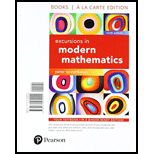
Table 1-26 (see Exercise 4) shows the preference schedule for an election with five candidates (A, B, C and D). In this election ties are not allowed to stand, and the following tie-breaking rule is used: Whenever there is a tie between candidates, the tie is broken in favor of the candidate with the fewer last-place votes. Use the plurality method to
a. find the winner of the election.
b. find the complete ranking of the candidates.
Table 1-26
| Number of voters | 202 | 160 | 153 | 145 | 125 | 110 | 108 | 102 | 55 |
| 1st | B | C | A | D | D | C | B | A | A |
| 2nd | D | B | C | B | A | A | C | B | D |
| 3rd | A | A | B | A | C | D | A | D | C |
| 4th | C | D | D | C | B | B | D | C | B |
Want to see the full answer?
Check out a sample textbook solution
Chapter 1 Solutions
Excursions in Modern Mathematics, Books a la Carte Edition Plus MyLab Math -- Access Card Package (9th Edition)
Additional Math Textbook Solutions
Finite Mathematics for Business, Economics, Life Sciences and Social Sciences Plus NEW MyLab Math with Pearson eText -- Access Card Package (13th Edition)
Numerical Analysis
Differential Equations: An Introduction to Modern Methods and Applications
A Problem Solving Approach To Mathematics For Elementary School Teachers (13th Edition)
Mathematical Methods in the Physical Sciences
Finite Mathematics with Applications In the Management, Natural, and Social Sciences (12th Edition)
- Twenty−three members of the executive committee of the Student Senate must vote for a student representative for the college board of trustees from among three candidates: Greenburg (G), Haskins (H), and Vazquez (V). The preference table follows. Number of Votes 9 2 8 4 First V G H H Second G H V G Third H V G V Another way to determine the winner if the plurality with elimination method is used is to eliminate the candidate with the most last-place votes at each step. Using the preference table given to the left, determine the winner if the plurality with elimination method is used and the candidate with the most last-place votes is eliminated at each step. Choose the correct answer below. A. Haskins B. Greenburg C. Vazquez D. There is no winner. There is a tie between Vazquez and Greenburg. E. There is no winner. There is a three-way tie.arrow_forwardTwenty−one members of the executive committee of the Student Senate must vote for a student representative for the college board of trustees from among three candidates: Greenburg (G), Haskins (H), and Vazquez (V). The preference table follows. Number of Votes 8 2 7 4 First H V G G Second V G H V Third G H V H ..... Another way to determine the winner if the plurality with elimination method is used is to eliminate the candidate with the most last-place votes at each step. Using the preference table given to the left, determine the winner if the plurality with elimination method is used and the candidate with the most last-place votes is eliminated at each step. Choose the correct answer below. A. Greenburg B. Vazquez C. Haskins D. There is no winner. There is a tie between Haskins and Vazquez. E. There is no winner. There is a three-way tie.arrow_forward12. Use the following preference schedule to answer the following question: Which of the candidates was the Majority candidate?arrow_forward
- The Science club is selecting its representative for a competition. The members rank the 4 candidates given in the preference table below: Using the agenda ABCD, who is the pairwise sequential winner?arrow_forwardA senior high school class held an election for class president. Instead of just voting for one candidate, the students were asked to rank all four candidates in order of preference. The results are shown below. Rankings Raymond Lee 2 3 1 3 4 2 Suzanne Brewer 4 1 3 4 1 3 Elaine Garcia 1 2 2 2 3 4 Michael Turley 3 4 4 1 2 1 Number of votes: 38 52 40 26 30 45 Using the Borda count method, does the winner satisfy the majority criterion? Yes. Using the Borda count method, Elaine Garcia won the election, and she had a majority of first-place votes .Yes. Using the Borda count method, Raymond Lee won the election, and he had a majority of first-place votes. No. Using the Borda count method, Raymond Lee won the election, although Elaine Garcia had a majority of first-place votes. No. Using the Borda count method, Elaine Garcia won the election, although no candidate received a majority of first-place votes. No. Using the Borda count method, Raymond Lee won the election,…arrow_forward13. Use the following preference schedule to answer the following question: Using plurality-with-elimination, who was eliminated 1st?arrow_forward
 Discrete Mathematics and Its Applications ( 8th I...MathISBN:9781259676512Author:Kenneth H RosenPublisher:McGraw-Hill Education
Discrete Mathematics and Its Applications ( 8th I...MathISBN:9781259676512Author:Kenneth H RosenPublisher:McGraw-Hill Education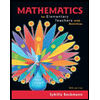 Mathematics for Elementary Teachers with Activiti...MathISBN:9780134392790Author:Beckmann, SybillaPublisher:PEARSON
Mathematics for Elementary Teachers with Activiti...MathISBN:9780134392790Author:Beckmann, SybillaPublisher:PEARSON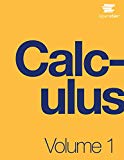
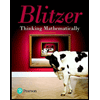 Thinking Mathematically (7th Edition)MathISBN:9780134683713Author:Robert F. BlitzerPublisher:PEARSON
Thinking Mathematically (7th Edition)MathISBN:9780134683713Author:Robert F. BlitzerPublisher:PEARSON Discrete Mathematics With ApplicationsMathISBN:9781337694193Author:EPP, Susanna S.Publisher:Cengage Learning,
Discrete Mathematics With ApplicationsMathISBN:9781337694193Author:EPP, Susanna S.Publisher:Cengage Learning,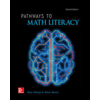 Pathways To Math Literacy (looseleaf)MathISBN:9781259985607Author:David Sobecki Professor, Brian A. MercerPublisher:McGraw-Hill Education
Pathways To Math Literacy (looseleaf)MathISBN:9781259985607Author:David Sobecki Professor, Brian A. MercerPublisher:McGraw-Hill Education





